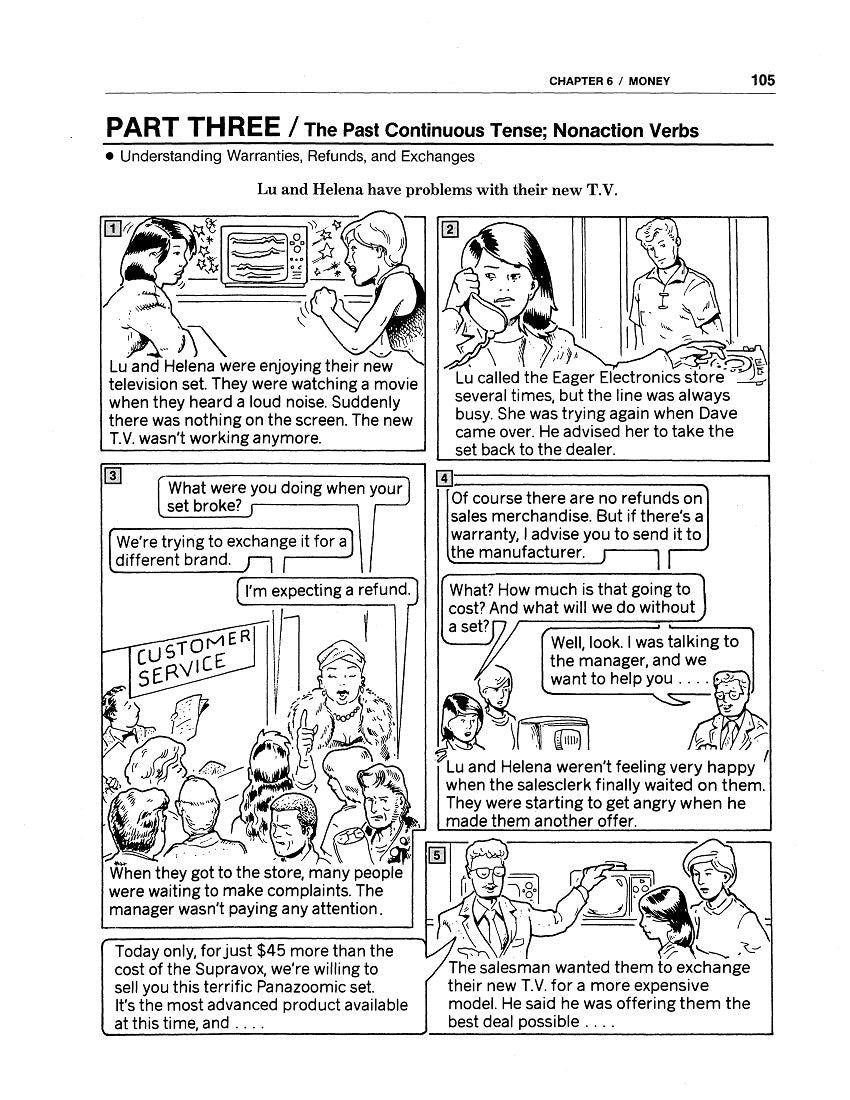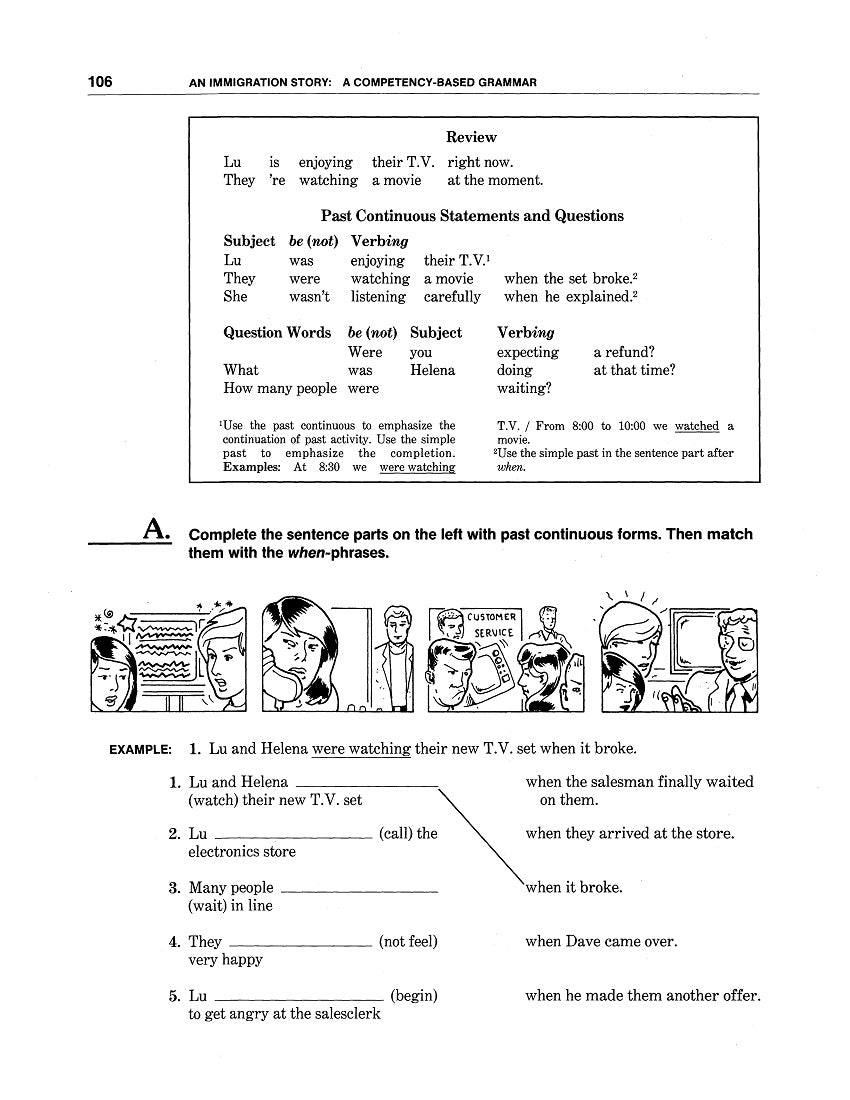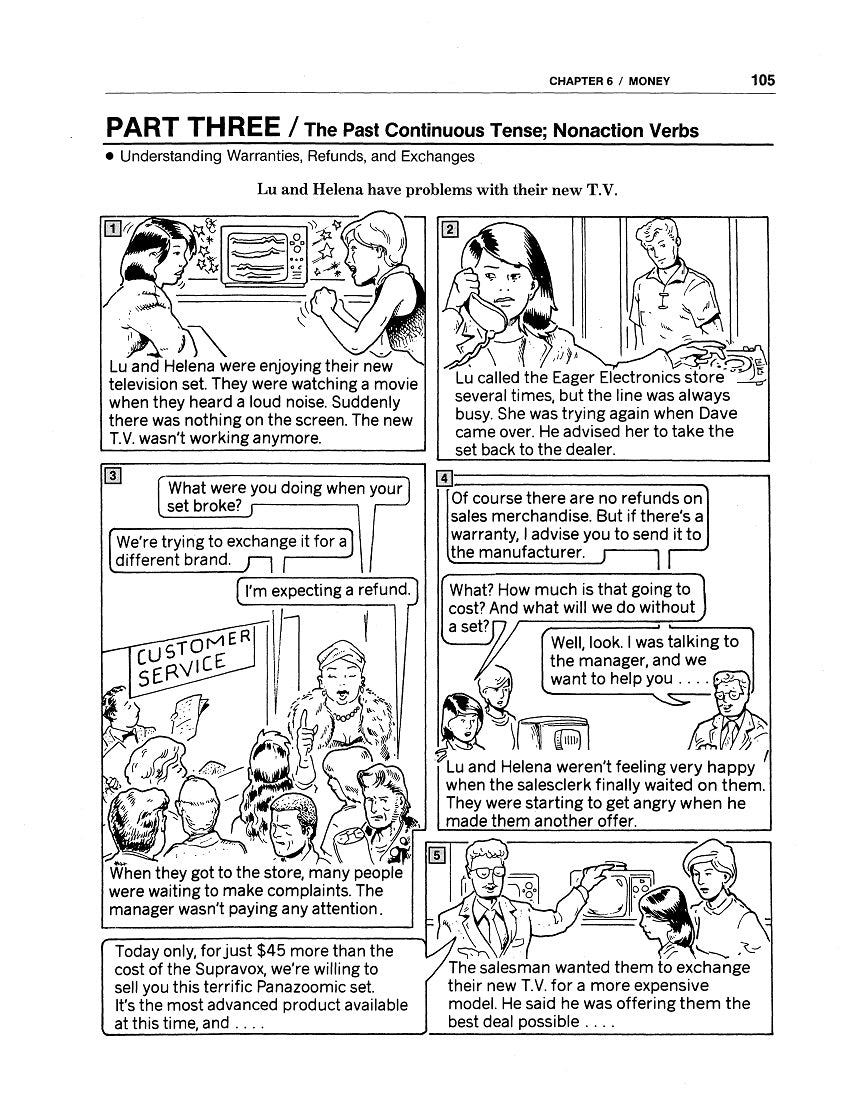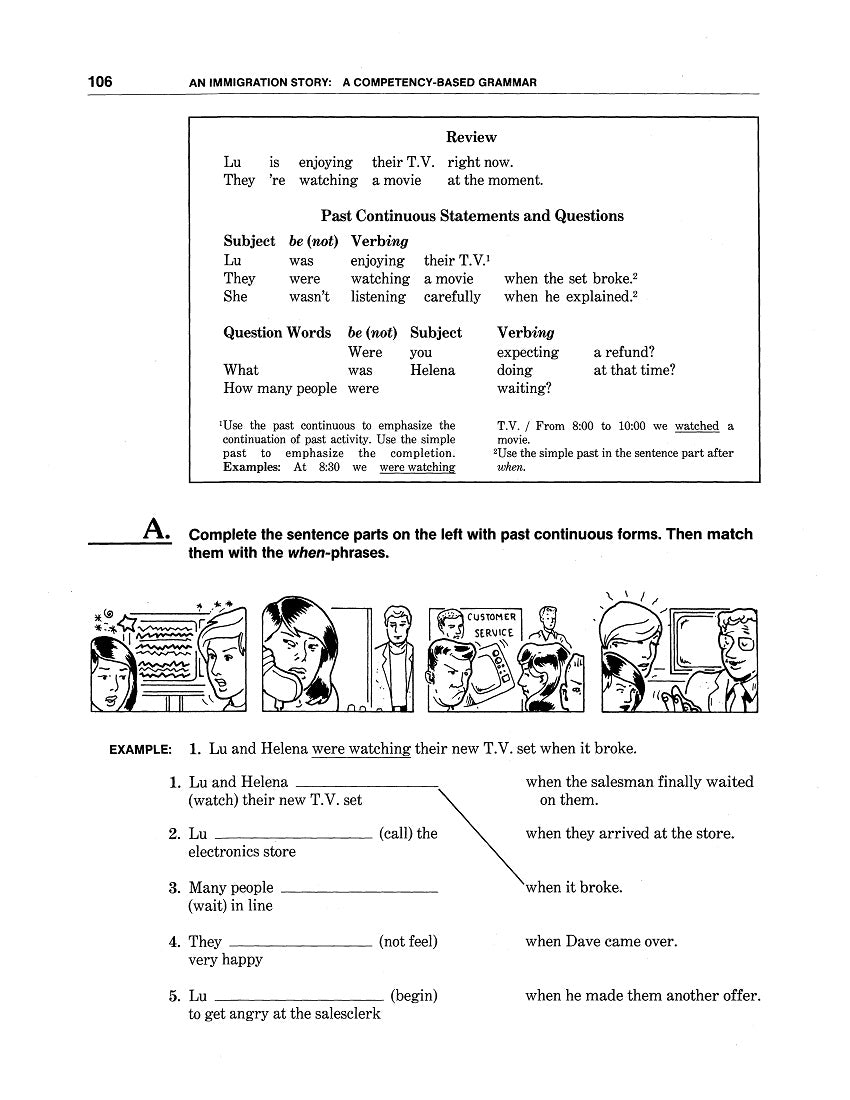1
/
of
2
Work/Life English
D-09.02 Use the Past Continuous with Action & Non-Action Verbs
D-09.02 Use the Past Continuous with Action & Non-Action Verbs
Regular price
$1.00 USD
Regular price
Sale price
$1.00 USD
Unit price
/
per
Part Three of Chapter 6 (“Money”) of WorkLife English Grammar 3: An Immigration Story, pages 105-109
5 Pages
Who It’s For: (Self) Teachers & Helpers at Intermediate Learning Levels
Why It’s Useful: In contrast to the Simple Past, which describes “completed action,” Past Continuous Verb Phrasing emphasizes the progression of past activity. It’s used with “action verbs” only—not with verbs of condition, thought, senses, measurements, and the like in “non-action” meanings.
What You’ll Do:
[1] On page 105, look at the Presentation of the grammar “The Past Continuous Tense; Nonaction Verbs” in the Strip Story, “Lu & Helena have problems with their new TV.” (You might want to act it out.) Especially, notice the uses of (simple vs. continuous) past verbs—in both one– and two-clause sentences. Tell or discuss what there is to know about the practical Competency (linguistic Function) of the segment: Understanding Warranties, Refunds, & Exchanges.
[2] On pages 106-109, read (aloud?) the pedagogy, understanding its grammatical structures (sample sentences) and notes. Taking in the meanings of the page 108 listings of “Nonaction Verbs,” see if you can think of other useful verbs to use in their simple rather than their progressive form. To practice applying the targeted grammar to realistic contexts, do and check Exercises A-E.
[3] Use Exercise *F as an opportunity to share what you know and to get needed information about purchasing (returning, exchanging, repairing, upgrading, etc.) electronic or computerized equipment or devices. Be sure to update (your and others’) vocabulary, data, intelligence, and aid to acquisition and use of technology in extraordinarily unprecedented times.
Couldn't load pickup availability




